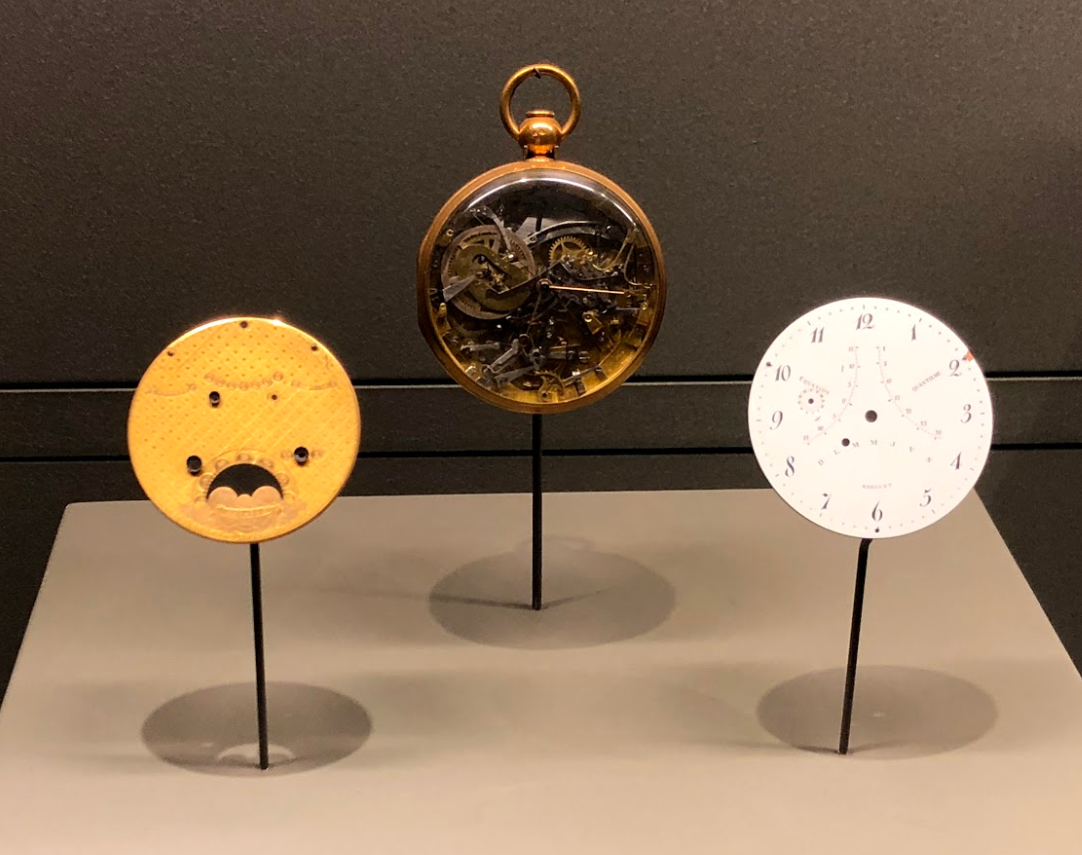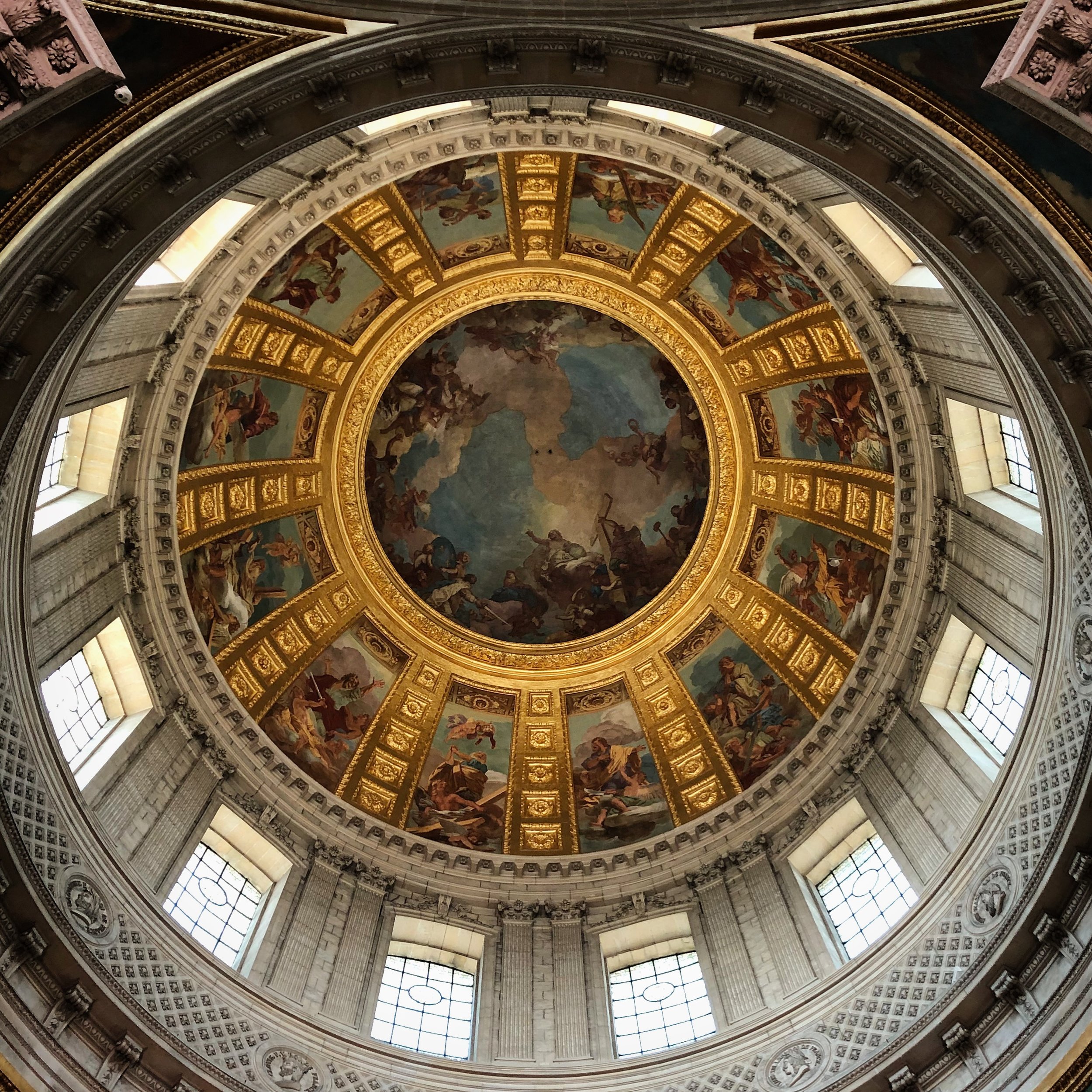The Paris Breguet Experience
It’s one thing to read about a person, but another entirely to walk in their literal footsteps and see firsthand how they lived – and, in some cases, died. This was the entire point of the “Breguet Experience”, a tour of Abraham-Louis Breguet’s life and time in the City of Lights. And the best part? You can follow in his footsteps too.
The first stop, quite naturally, is in Paris itself. More so than any other city, Paris shaped the history of Abraham-Louis’ eponymous brand, and is intertwined inextricably with the generations that followed. Obviously, horology plays a large part in this story, but if we take the Breguet name as a whole, aviation and telecommunications also have their roles in the legacy, born from Abraham-Louis’ time in Paris.
Paris
Original Workshop (39 Quai de l’Horloge)
The first stop on any tour of Abraham-Louis’ Breguet’s life has to be his original workshop, located on the banks of the Seine at 39 Quai de l’Horloge. It was here that he began his career as a watchmaker of note; one that would go on to count royalty, and – for a time – emperors, among his clientele. The fact that it’s still standing, and, indeed, is still owned by the Breguet family is a testament to the reputation of the Breguet name, and to the level of skill that he applied to his watchmaking.
A short walk from the ancestral workshop is the La Conciergerie, which is where Marie Antoinette was held prior to her execution. While it’s no secret that the queen was one of Abraham-Louis Breguet’s most famous clients. What is less well known is that he volunteered to act as one of her guards in an effort to protect her during her incarceration. (Good thing he didn’t have to walk too far…)
Eiffel Tower (Champ de Mars, 5 Avenue Anatole)
With few exceptions, there are no monuments that define Paris more iconically than the Eiffel Tower. Originally constructed as part of the 1889 World’s Fair, the tower itself wasn’t intended to be a permanent part of the Parisian skyline. In fact, it was only mean to stand for twenty years, after which it was to be dismantled. To help prevent this eventuality, Gustav Eiffel arranged to have the names of prominent families who had contributed to the arts, sciences, etc. permanently affixed to the first ring, thus ensuring their support for the permanent status of the monument. Interestingly, the “Breguet” that’s immortalized on the tower isn’t Abraham-Louis, but, rather, his grandson, Louis-Clement, and he merited the honor not because of his contribution to horology, but because of his contribution to telecommunications. Louis-Clement was a contemporary and fan of Thomas Edison, and through this relationship, he introduced the first telephones to France, which were installed at 39 Rue de l’Horlage.
Family Plot at Père-Lachaise Cemetery (16 Rue du Repos)
One of the more macabre stops on any trip to Paris is the Père-Lachaise Cemetery, a sprawling memorial to the afterlife that is the final resting place for such notables as Jim Morrison, Oscar Wilde, Isodore Duncan, Gertrude Stein and Victor Noir. (With respect to that last one, the less said the better…). In addition to these stalwarts, there’s also a small plot, easily overlooked, that houses the Breguet family, all the way back to Abraham Louis himself. It’s fitting that Breguet is here, not only because of the family’s contributions to horology, telecommunications, and aviation, but also because many of their patrons and fans are also interred there.
Rue Bréguet (11th Arrondissement)
Okay, so this one may be a bit of a stretch, but, still, it’s fun, and it will ensure that you get to eat some amazing food at not one, but two different restaurants in the heart of Paris’ 11th Arrondissement near La Marais. The street, which was formally named in 1868, does in fact, honor Abraham-Louis Breguet. Though, it does so with a misplaced accent aigu over the first “e’. Why this is I doubt anyone knows at this point, but so long as you’re standing on the corner staring at the odonym, why not pop in the 5-star Maison Breguet for a bite to eat in their absolutely delightful restaurant? True, this elegant boutique hotel may not be associated directly with the family of Mssr. Breguet, but the name fits and thanks to the ministrations of celebrity chef, David Lahner, the food is excellent. So excellent, in fact, that it was named to Vogue Paris’ 2018 list of the top seven new restaurants in the city. (Pro tip: take a peek in the Wine Room, where several books on Breguet are featured on the shelves.)
Now, should you desire something a bit more quaint, and perhaps ever so slightly more affordable, to vanquish your hunger, kitty corner across the street is Le P’tit Bréguet, which offers such Parisienne staples as aligot, cotes du boeuf, escargot, and more. Either way, you won’t leave the neighborhood hungry.
Musée des Arts et Métiers (292 Rue Saint-Martin)
In a city known for its art museums, it’s easy to overlook the Musée des Arts et Métiers, which was established in 1794 at the Saint-Martin-des-Champs Priory. Here, we have a museum that’s dedicated not to painting or sculpture, but rather, to technical achievement in the areas of scientific instruments, materials, energy, mechanics, construction, communication, and transport. That’s all well and good, and, if I’m being honest, these are all important pursuits that deserve to be on display, but how does this relate to Breguet? Well, pocket watches and marine chronometers can be considered scientific instruments of a sort – and, yes, there are more than a few examples of Abraham-Louis’ craft on display – but remember when I mentioned that his grandson, Louis Clement, introduced the telephone to France? Bingo! In the Communications hall you’ll find several Breguet-branded phones and telegraph machines on display, which ties in neatly with our earlier visits to Abraham-Louis’ workshop and the Eiffel Tower.
As it so happens, there is another area that the Breguet family name is associated with. In fact, most French – provided that they’re not watch collectors – would be most familiar with “Breguet” as it relates to aviation. In 1911 Abraham-Louis’ great-great-grandson and noted airplane designer, Louis Charles founded the Société des Ateliers d'Aviation Louis Breguet, more simply known as Breguet Aviation. (In 1919 he also went on to co-found the forerunner of Air France with well-known aviator, Louis Bleriot, and the founder of Renault, Louis Renault – lots of guys named “Louis” back then, but that’s neither here nor there.) As such, you’ll find a Breguet Type IV RU1 bi-plane hanging from the nave of the Priory.
Les Invalides
The final resting place of Napoleon Bonaparte is a must-visit site for any visitor to Paris, let alone the dedicated watch collector and Breguet fan. Originally commissioned by King Louis XIV in 1670, the giant structure was intended to be convalescent ward for injured and elderly soldiers. As time passed, the complex grew in size and went on to house several museums, and, of course, one diminutive emperor.
Napoleon was interred under the Dome in 1840 by legal decree, hence our interest in it here. Napoleon was one of Abraham-Louis’ more notable clients, and indeed, in Breguet’s archives you’ll find an order for a field clock from one “General N. Bonaparte”. He would go on to own several other Breguet timepieces in his lifetime. (Empress Josephine and Napoleon’s sister, Caroline Bonaparte were also clients.)
The Louvre
As with Les Invalides, the Louvre needs no introduction. Considered one of, if not the most prestigious repositories of art in the world, again, this is a must-see for any visitor to Paris. For the Breguet fan, however, the focus lies squarely on a small corner of the Richelieu Wing, Gallery 554. There, on display, you’ll find an exquisite collection of Breguet pocket watches, including everything from so-called “subscription” watches to minute repeaters. Consider this your oasis amidst the chaos that is the Louvre. Seriously, after you’ve been dragged to see the Mona Lisa (and the entirety of the Denon Wing), Winged Victory and pretty much every other marquee attraction in the joint (and they are legion), this will be your reward.
Mind you, I would be remiss if I weren’t to add here that the late Nicolas Hayek, through Breguet, donated several million euros to the privately funded restoration of the “Louis XIV to Louis XVI” Galleries, located in the Sully Wing on the first floor. Reopened in 2014 after a five year from-the-ground-up refurbishment, Mr. Hayek didn’t live to see the project to completion, but fortunately for the rest of us, his largess lives on in fine, baroque style. True, this will keep you a bit longer from the Breguets, but it’s definitely worth a look.
The Breguet Boutique and Museum at Place Vendome
The Breguet boutique, located at Place Vendome, is not only the best place to check out Breguet’s entire contemporary collection of timepieces, it’s also the best place to check out Breguet’s historic timepieces as well. Upstairs you’ll find a comprehensive exhibit of vintage Breguet watches, marine chronometers and pocket watches spanning the entirety of Breguet’s history from the manufacture’s inception in 1775 right up to today. This is also where the Breguet archives are housed, with detailed hand-written records that can be traced all the way back to 39 Quai de l’Horloge.
Versailles
Le Petit Trianon
Now it’s time to leave Paris, the city proper, and venture forth to the summer stomping grounds of French royalty, the incomparable Palace of Versailles. While it’s only 12 miles as the crow flies from the center of Paris, it feels a world away as you leisurely pace the immaculately landscaped gardens and roam the vast, empty corridors of power and prestige. Ha, I’m just kidding! Since you’re probably here in summer – and even worse – the month of August, the palace and adjacent gardens will be overrun with tourists from all across Europe, each one vying for THE best picture of this, that and the other, and dammit, you’re in the way. Okay, maybe it won’t be quite that bad, but for our purposes, Le Grand Trianon – the main palace, and as such, the destination of the vast majority of pushy tourists – isn’t our focus. Rather, it’s Le Petit Trianon, which is famous for being Marie-Antoinette’s private retreat from the onerous demands of the royal court.
The Petit Trianon was originally commissioned by King Louis XV for his mistress, Madame du Pompadour. Designed in the Neo-classical style, it was completed in 1768, four years after the passing of Mme. Du Pompadour, (fortunately for Louix XV, he was able to install his new mistress, Madame du Barry, so the effort didn’t go to waste).
The above notwithstanding, the attraction for Breguet fans lies with the Petit Trianon’s association with the doomed queen, in who’s name Breguet’s most complicated pocket watch was commissioned. That she didn’t live to take possession of said pocket watch is beside the point. (In fact, the timepiece – known internally as “No. 160” – was completed 34 years after her untimely demise, and fours years after the death of Abraham Louis, himself.) Even though Marie-Antoinette never had the pleasure of owning No. 160, she was known to have possessed several Breguet timepieces in her lifetime, including a perpetual calendar. Nevertheless, it’s No. 160 that she’s associated with and it was No. 160 that was impetus for Nicolas Hayek to become the primary donor for the Petit Trianon’s restoration.
Here’s an interesting bit of trivia for you: the watch box that accompanies the near-priceless Marie-Antoinette replica pocket watch – No. 1160 – was made entirely from marquetry derived from her favorite oak tree. This tree was critically damaged during a particularly violent storm in 1999, and in 2005 when it was finally slated to be felled, Mr. Hayek, who was then knee-deep in the process of having No. 1160 made, asked to buy it. The trust responsible for Versailles gladly donated the wood required, and, in fact, the tree still lies on the grounds outside of the residence, so by all means go and take a picture. Indeed, this is probably as close as you're going to get to the actual timepiece, so make the most of it.




















